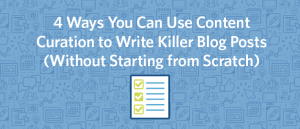Does it feel like your organization is data-inept? You may not be that far behind everyone else.
Don’t let all the news in the business press about other companies’ analytics successes scare you — the data race is far from over.
That’s the message behind Sam Ransbotham’s recent blog post “Catching Up with Scantily Clad Analytics Emperors,” at the MIT Sloan Management Review web site.
“I suspect that our impressions of the analytic capabilities of others may not be entirely accurate,” Ransbotham writes. “Reporting bias and social desirability make it likely that reports of analytics capabilities are, at best, overblown.”
Ransbotham, an associate professor of information systems at the Carroll School of Management at Boston College and the MIT SMR guest editor for the Data and Analytics Big Idea Initiative, goes on to provide seven suggestions for moving towards analytical prowess. These suggestions revolve around reducing the barrier to getting started and augmenting individual skills.
“Even the best-intentioned people won’t take an analytical approach if it is too hard,” Ransbotham notes. To get started, he suggests four steps:
- 1. Provide examples of analytical models built using your organization’s data with your organization’s tools. “It is much easier for people to create valuable models by extending and modifying; starting from scratch is tough,” he notes.
- 2. Codify analytical knowledge in a collaborative tool like a wiki. “Quickly modifiable repositories not only prevent duplicate efforts, but also allow efforts to build on each other.”
- 3. Predict the most useful data for your organization and prepare it for your organization’s tools. “You’ll sleep better knowing everyone isn’t looking up how to import the data again and again.”
- 4. Anticipate organizational concerns with data use. “If there are rules or restrictions associated with some data, spell them out so that people have realistic expectations about what can be done.”
In terms of augmenting individual skills, Ransbotham notes that using data well is, at its core, about applying skills to problems. On the other hand, “without analytical skills to apply, there is not much hope of analytical growth.” To promote building individual skills, he suggests these three additional steps:
- 5. Curate content to make it easy to access and build on. “Reduce the search space by providing content specific to your organization’s tools, context, and data.”
- 6. Encourage trial and error. “Misuses of analytics tools are inevitable as people begin to learn. Give people some time to experiment, take risks, and mess up — then use the experience to add to the organizational learning by including it in your collaborative tool.”
- 7. Exploit differences. “Within your organization, people have a variety of skills and backgrounds. As people figure out cool skills, provide a forum to spread them. For example, a brown-bag series can both showcase tools and build a culture of learning.”
Many companies still rely on managerial intuition or basic spreadsheets for decision making. But like them, if that’s where your company is today, it’s time to get started. “Keep moving forward at the best pace you can,” advises Ransbotham.
This article draws from “Catching Up with Scantily Clad Analytics Emperors,” a blog post by Sam Ransbotham (Boston College). It was posted online on November 20, 2014, at sloanreview.mit.edu.
Business & Finance Articles on Business 2 Community
(325)





